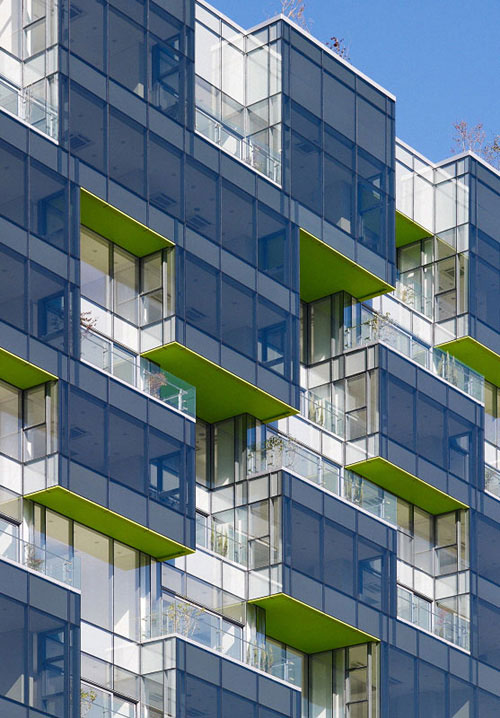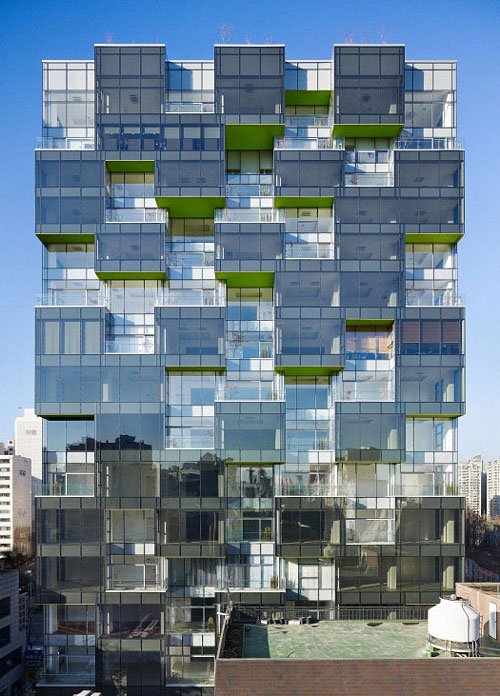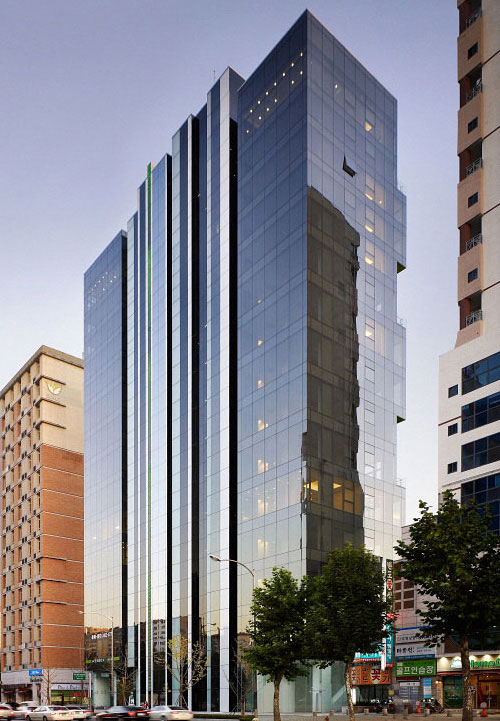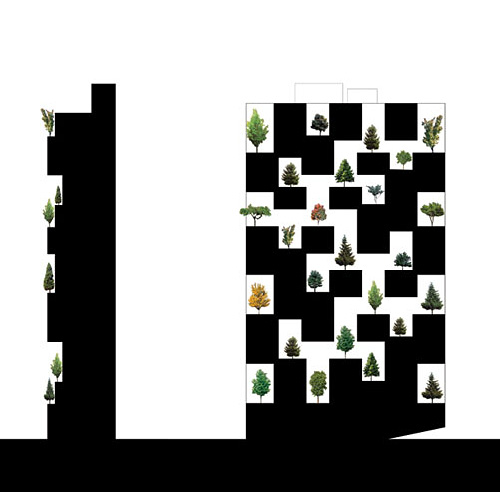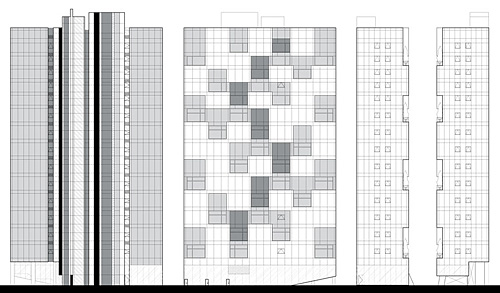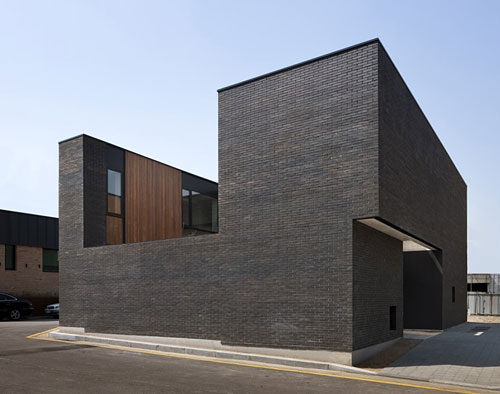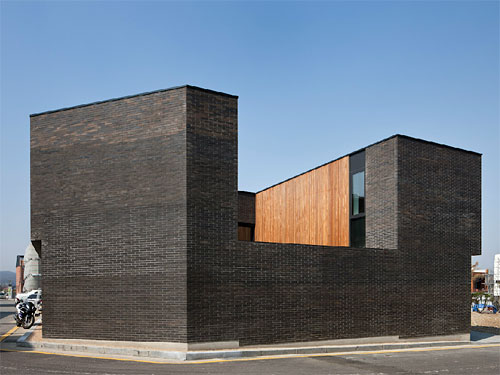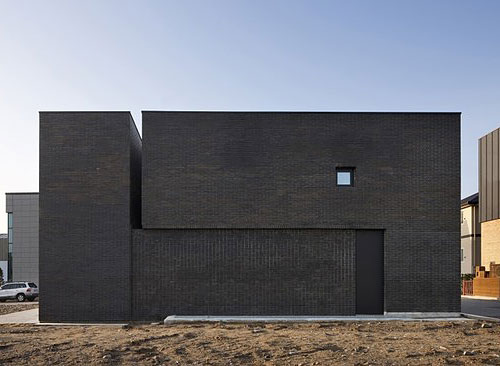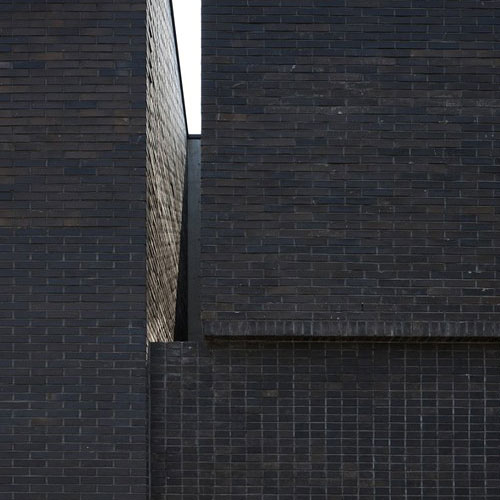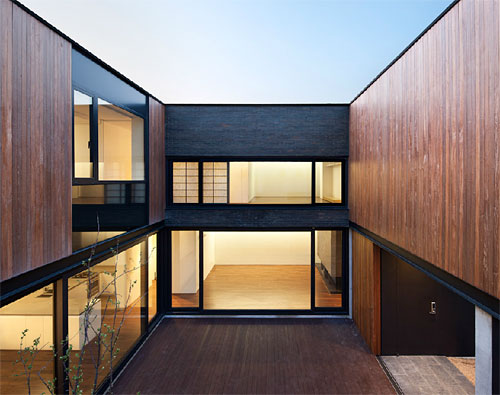
BAU BAU 2008 - 2011 Switzerland
Lee Dong-joon tried innovative methods in architecture while working with his partner Melanie Stocker in Switzerland. The Korean-born architect has sought to balance the unique characteristics of local communities with universality and achieved top quality and exceptional design in several projects in Switzerland.

Land in the southern Ticino region of Switzerland, length 90m, width 15m unusual appearance of the long, narrow, many of these areas unsuitable for construction exterior has been. Border and the outer wall from a distance of 4.5m per second, the available interior space was not only about about 5m.
Unusual conditions provoked interesting and challenging our consciousness. Lying on the grass carpet of the long and narrow buildings around the house and vineyards are lined up. Rather, this esoteric environment, the architect's creative instincts awakening is an important factor. The most obvious feature of this building is in the selection of materials. 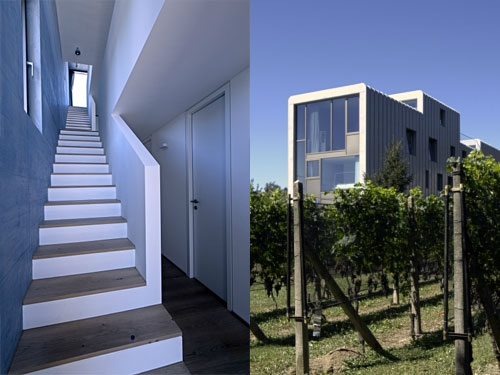
Tube type of building architecturally exposed concrete reasons to increase the aesthetic value and the inner wall of the outer wall by a rhythm section composed of titanium Width 50cm sheath are covered with zinc. Corner of surfacing was selected to increase the continuity of the surface. Other horizontal surface using bronze aluminum windows. Handle indoor white oil oak floor is a pale blue-gray light colored mineral pigments to the interior of exposed concrete and harmony will be considered. 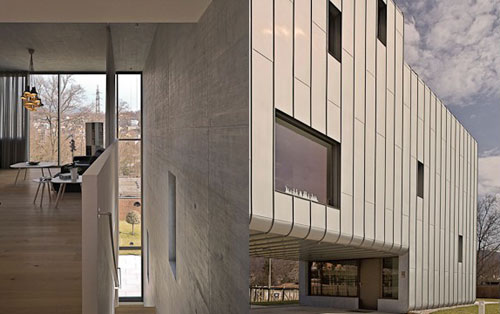
The building is similar to the two apartments facing structure consists 4th floor atrium and guest room on the first floor, second floor, the third floor in the kitchen and dining room, and living room, all bedrooms studio and terrace is located up the stairs, and all this space to provide visual continuity of the building in the space configuration, usually of a typical housing and we did not have a choice.
Space that is often used in conjunction with the whole family, the small mountain views from the highest point of the Genesee 1700m above sea level, while increasing the mining rate be able to enjoy throughout the seasons. Way and emphasizes interior space and high and narrow for efficient use of the indoor and outdoor vertical space visually connected.

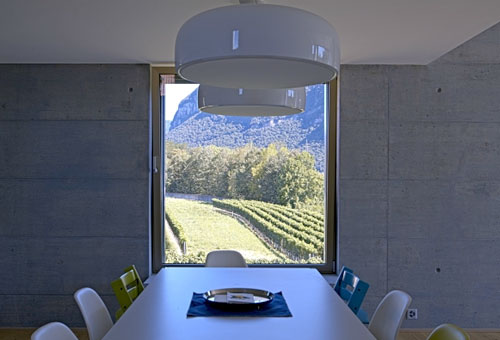
Lee Dong - joon _ Stocker Lee Architects 1971 Born in Seoul. For two years from 1995 trip to Japan, Italy, the United Kingdom and the world of architecture, language, mathematics, and birds encountered. USI, enrolled at the Accademia di architettura 1997, majored in architecture, graduating in 2002 (Master of architectur, Bachelor + Master). Graduating as a professor at his alma mater at the same time (USI, Accademia di architettura), was appointed as a freelance architect Mario Botta (Switzerland), Antonio Citterio (Italy), Aurelio Galfetti (Switzerland), along with construction and design work in parallel. 2006 studio Stocker Lee Architects, founded by vigorous work activity, and this year was awarded the 'Young Architects virtual '2012 



